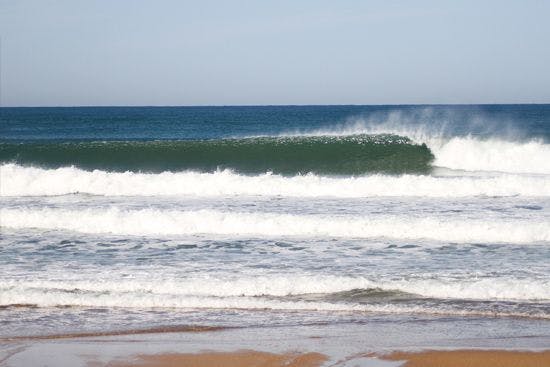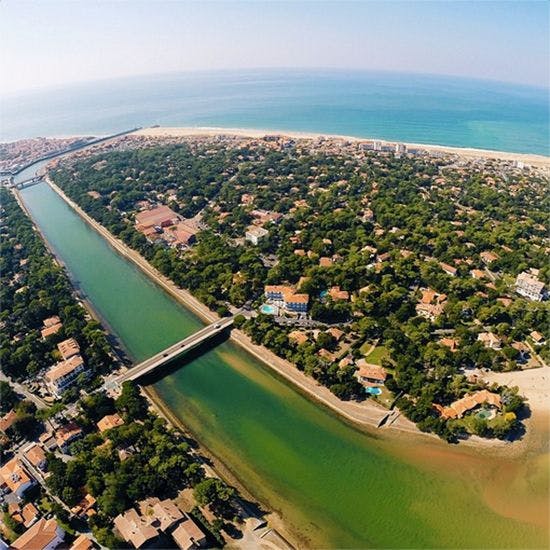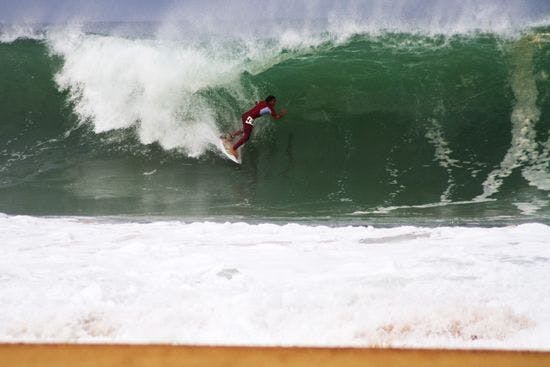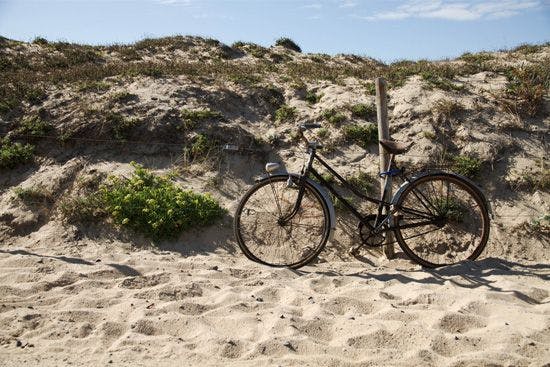TravelDeparture Gate: Hossegor

Words by Mat Arney. Images by Corey Wilson, Laura Wilkinson & Mat Arney.
The seasons have finally started to turn. As autumn arrives most European surfer’s thoughts turn to the beaches of South West France – Hossegor in particular – and scores of European wave riders load up their vans and make a beeline for the Landes coastline.

Photo: Dawn patrol at Les Estagnots, site of this years ASP France Pro by Laura Wilkinson
At almost 160 miles long, the west coast of the Aquitaine region (comprising the departments of Gironde to the north and Landes to the south) is one long, straight, sandy beach open to the might of Atlantic Ocean swells. Over the summer months the smaller swells, large tides and north-to-south littoral drift sculpt the sand into a seemingly endless succession of near-identical sandbars curving out from the beach. When the first swells of autumn arrive they are transformed by these sand bars into A-frame peaks providing long, walled-up lefts and short, hollow rights. Add to this the land sea breeze caused by the temperature difference between the cool Atlantic and the post-summer warmth of mainland Europe’s land mass, and you have a recipe for some of the world’s best beach break waves with sunshine and offshore winds each morning. And that’s before you even arrive at Hossegor…

Photo: Mat Arney
The town of Hossegor, situated in the south of Landes 12 miles north of the chic resort town of Biarritz, has a lot to thank Nature and Napoleon for. Until about the early 1300s the river Ardour, which flows down from the Pyrenees Mountains, emptied into the Bay of Biscay just south of Hossegor at Capbreton before being diverted to the south to hit the sea at Bayonne and produce a natural harbor. It left behind it a deep underwater trench that cuts through the continental shelf and focuses swells moving out of deep water straight onto a relatively short stretch of sand on the Hossegor beachfront.

Photo: Corey Wilson
Then in the 1800s Napoleon arrived and had the enormous area of marshland behind the sand dunes planted with pine trees that transformed the marshes and stabilized the all-important sand dunes. Therefore, whilst the rest of the 160-mile beach gets good waves, Hossegor gets great waves.

Photo: Marc Lacomare at La Graviere by Mat Arney
There are several down sides to such great waves, however, one of which is crowds in peak season. Inevitably, with such a great reputation and the majority of Europe’s surf industry based just a few miles inland, the waves straight out front can become busy and are often a stage for the sponsored elite during September and October. The other variable to consider is that these waves break over sand that shifts and moves with each passing wave and turn of the tide; decent sand banks can be “here today, gone tomorrow” and some only offer a limited window for surfing as the tide moves across them. Therefore a major component of any surf trip to the Landes region is driving through the miles upon miles of regimented pine forests, taking unmarked tracks towards the beach and scrambling over dunes to check the banks. It is perfectly possible to score perfect, empty, French beachbreaks to yourself with a little bit of searching. Just be prepared to paddle plenty too, wherever you surf – the long shore drift and currents can be strong during a good swell and you may well end up surfing successive waves on different peaks as you drift south down the beach.

Photo: Mat Arney
But France has more than just waves to offer the travelling surfer; if the winds turn crook then you have a wealth of cultural and historic attractions at your disposal, not to mention France’s famous food and drink. In fact, the fantastic cuisine and plentiful wine could well be your undoing in the first place and you might end up joining many other surfers who arrive at the beach a little late for the dawn patrol following an extended dinner the evening before.
WHERE: Bordeaux (BOD) or Biarrtiz (BIQ), possibly via Paris (CDG)
WHEN: Most of the year around. September and October are prime time.
WHY: Some of the best beach breaks on the planet, European history and culture, world famous food & wine.
HOW: Shortboard (plus a spare) or Longboard